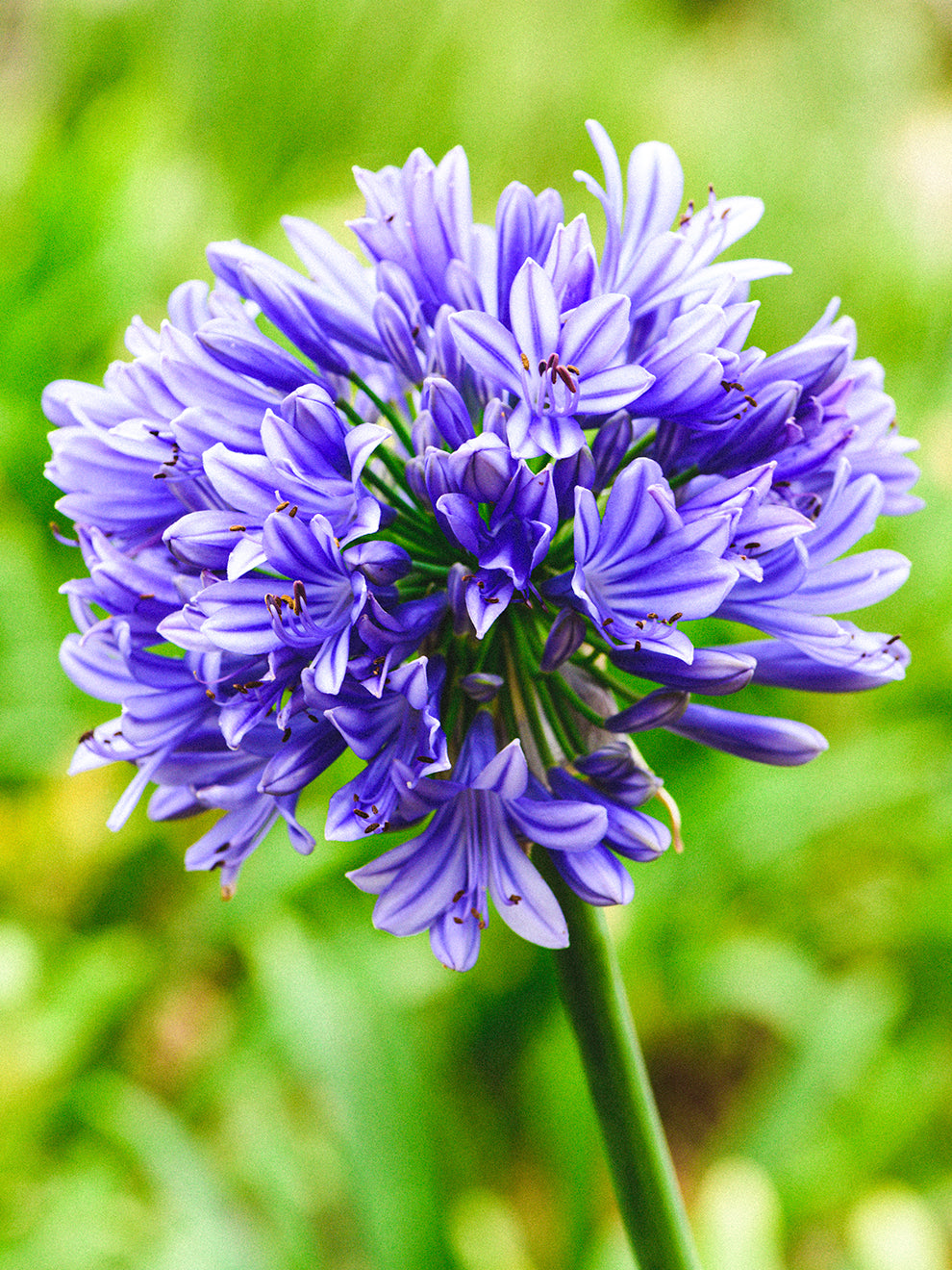Growing Agapanthus: A Complete Overview to Beautiful Blooms
Unleashing the Secret to Effective Agapanthus Farming: Idea for a Flourishing Garden
In the realm of gardening, growing agapanthus efficiently requires a strategic technique that encompasses various aspects of plant treatment. By recognizing the subtleties of agapanthus farming, one can develop an atmosphere where these plants grow and flower generously.
Growing Agapanthus: Ideal Practices
When growing Agapanthus, proper soil prep work is vital for making certain successful growth and development of these stunning flowers. Agapanthus, frequently referred to as Lily of the Nile or African lily, prospers in well-draining dirt with a somewhat acidic to neutral pH degree - Agapanthus. Before planting, it is critical to modify hefty clay dirts with natural issue such as garden compost or peat moss to enhance drain and provide vital nutrients for the plants
To plant Agapanthus, choose a location that receives full sunshine to partial color, as this will certainly advertise healthy and balanced development and plentiful blooming. Dig a hole two times the diameter of the plant's root ball and place the Agapanthus at the same deepness it was formerly growing. Delicately backfill the opening with soil, weighing down strongly to get rid of any type of air pockets around the roots.
Water the recently grown Agapanthus extensively and remain to keep the dirt equally moist, especially during the plant's active growing period. Agapanthus. Using a balanced fertilizer once a month can even more support the plant's development and flowering. By following these best practices for growing Agapanthus, you can develop a spectacular display screen of these captivating flowers in your garden
Ideal Dirt Conditions for Agapanthus
For optimal development and blooming success of Agapanthus plants, making sure the soil problems are perfect is essential. Agapanthus chooses dirt that is abundant in nutrients, so integrating a well balanced plant food during the growing season can advertise healthy growth and vivid flowers.

Watering and Fertilizing Tips
To make sure healthy development and lively flowers, appropriate watering and fertilizing methods are important for successful Agapanthus growing. Agapanthus plants profit from routine watering, specifically throughout the expanding period.
When it pertains to fertilizing Agapanthus, a balanced plant food with equivalent parts nitrogen, phosphorus, and potassium can be used in the spring to promote check here healthy development and flowering. Slow-release fertilizers are ideal for providing nutrients progressively over a prolonged duration. Avoid over-fertilizing, as this can result in excessive vegetation development at the expense of blossoms.
Furthermore, incorporating organic matter like compost right into the dirt can enhance nutrient levels and boost soil framework, helping in the overall health of the Agapanthus plants. By adhering to these watering and fertilizing pointers, gardeners can guarantee their Agapanthus plants thrive and create spectacular display screens of flowers.
Pruning and Deadheading Techniques
Proper trimming and deadheading methods play an important duty in preserving the wellness and appearances of Agapanthus plants, enhancing the vital techniques of watering and fertilizing for effective cultivation. Pruning Agapanthus entails getting rid of invested blossom heads, dead or yellowing leaves, and total shaping of the plant to advertise better growth. Deadheading, the process of eliminating faded flowers, not just enhances the plant's appearance but additionally motivates more blooming.
When deadheading Agapanthus, it is recommended to trim off the flower stem at the base making use of sharp, clean shears. This process reroutes the plant's power from seed production back into origin and vegetation development, promoting a healthier and much more durable plant. Regular deadheading can extend the flowering duration of Agapanthus and avoid self-seeding, which can result in congestion.
In terms of trimming, Agapanthus normally take advantage of a light trim after blossoming to clean up the plant and urge fresh development. Cutting down the invested flower stems and removing any broken or dead foliage aids preserve the plant's vigor and general look. However, it is vital to prevent reducing into the crown of the plant, as this can compromise its health and wellness.

Protecting Agapanthus From Pests and Diseases
Executing efficient insect and condition management methods is critical to safeguarding the wellness and vigor of Agapanthus plants in cultivation. One usual pest that impacts Agapanthus is the Agapanthus borer, a caterpillar that tunnels into the plant, creating damages to the blossoms and fallen leaves.
Along with insects, Agapanthus are vulnerable to conditions such as origin rot and fungal leaf places. These problems can frequently be stopped by making certain correct drainage and preventing overwatering. If signs of disease appear, affected components of the plant must be quickly removed to avoid additional spread. Fungicides might additionally be used as a treatment procedure, complying with the producer's guidelines thoroughly. By staying vigilant and resolving bug and illness concerns immediately, gardeners can help their Agapanthus flourish and grow.

Verdict
In final thought, effective cultivation of agapanthus calls for proper planting methods, optimal dirt problems, appropriate watering and feeding, regular trimming check out this site and deadheading, and protection from bugs and conditions. By following these ideas and methods, garden enthusiasts can ensure a growing garden loaded with attractive agapanthus blooms. Agapanthus. Keep in mind to keep constant care and focus to information to advertise the health and long life of these spectacular plants
When planting Agapanthus, proper dirt prep work is essential for ensuring successful growth and development of these stunning flowers.Water the recently grown Agapanthus extensively and continue to maintain the dirt evenly wet, specifically during the plant's energetic growing period.For ideal development and flowering success of Agapanthus plants, making sure the dirt conditions are excellent is crucial. When planting or transplanting Agapanthus, ensure the soil is well-prepared to supply the essential structure for the plants to establish themselves effectively. One usual parasite that impacts Agapanthus is the Agapanthus borer, a caterpillar that tunnels into the plant, causing my explanation damages to the blossoms and leaves.